One of the ways to decorate the sites is to use forged products. Fences, benches, arbors, stair railings and other similar structures look very decorative. And in most cases, these products are not forging in its traditional sense. Most often it is not done in the forge and not with the help of a hammer and anvil, but with the help of some devices that allow you to create a variety of patterns and products from metal strips and square bars. For the manufacture of such products will require machines for cold forging. Some of them can be made with their own hands, the other is easier to buy.
Contents of the article
What devices are used in general
For cold forging is characterized by various curls, bends, twisted bars, etc. Almost under each type is made on a separate device – a certain machine. The drive at them can be manual, and maybe – electric. For small volumes “for themselves” apply manual machines for cold forging. They are not particularly productive, but much easier to manufacture. If it is necessary to put the production “on the stream” make similar devices, but already with electric motors. In this case, you almost do not need to work physically, but the complexity of manufacturing the device increases many times. In our material we will talk about manual machines for cold forging.
What kind of devices are used:
- Torsion. With their help, tetrahedral bars or strips of metal are twisted in a longitudinal direction. It turns out twisted columns, which are also called torsions.
- Flashlight. On this device also twist the rod in a longitudinal direction, only additionally bend it in a transverse direction. It turns out something similar to a flashlight. Hence the name of the device.
- Twisters or snails. Form flat curls of different diameters.
- Bending machines or bends. Allow you to bend bars or rebar at the desired angle in any place.
- Wave. In fact, it is also a bending machine, but of a more complex design – it allows you to change the direction of bending, obtaining wave-shaped parts.
- Devices for processing the ends of parts – inertial stamping machines or other homemade devices.
For a novice master, the most relevant machine for cold forging is a snail. Only with its help you can make a lot of interesting things – starting from a fence and a gate and ending with a bench and other similar products. In second place in the degree of necessity is the torsion machine. It adds variety to the piece. All the others can be purchased or made as you improve and gain skill.
Homemade “Snails”
In essence, this is a modernized bending machine (pipe bender), but these improvements allow you to easily make curls from fairly thick bars (cross-section up to 10-12 mm) and repeat them with a high degree of accuracy.
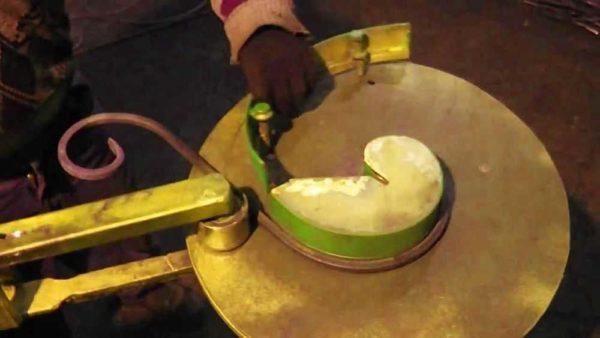
Designs of these machines for cold forging have several, but the easiest to implement is a version with a round table with a central leg. To the leg is movably attached lever with rollers on bearings at the end. They facilitate the bending process.
The surface of the table can be made of steel sheet with a thickness of 10 mm or more. For the leg, you can use any thick-walled round tube. It is important to make the construction stable, since lateral forces will be applied, so you need side posts, spacers, and a stable base.
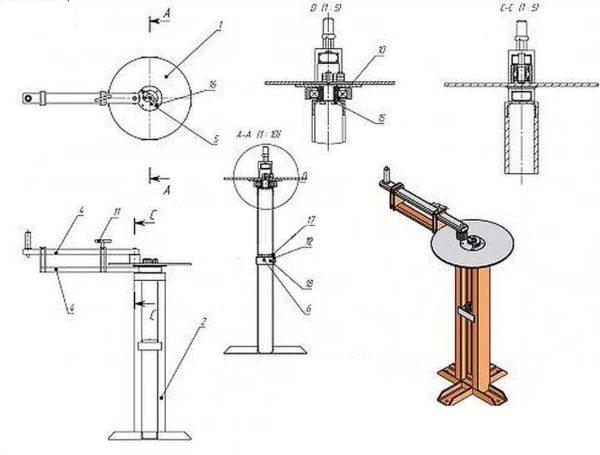
The lever is easier to make from a square tube with a thick wall – at least 2-3 mm. The cross-section of the pipe is 25*40 mm or so. Attachment of the lever to the leg can be made on a bearing, and you can just take a small piece of thick-walled pipe of larger diameter, put it on the leg, and weld a strip-support at the bottom – to keep the lever down. The option with a bearing gives a lighter movement, but in the presence of grease and the second option works.
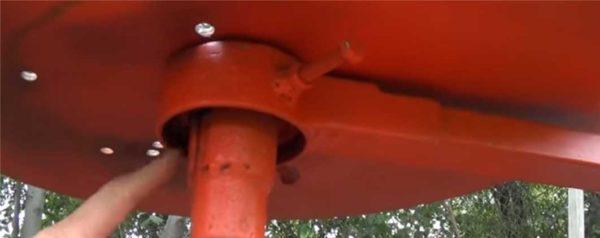
The shape of the lever is also important. The lever is double, the upper part is the working part, the lower part is the support part. Wherever there are connections, it is desirable to add reinforcement, because the forces are significant.
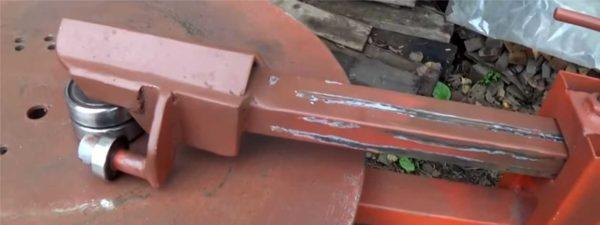
On the table is fixed mandrel or conductor – the form on which the curls are bent. They are made of different diameters – so that you can make different diameters of curls. Such mandrels can be prefabricated – to form a greater number of bends. Each such pattern should have rods that are installed in the holes in the table. This is how this pattern is fixed. Also, its shape should be designed so that the end of the rod in it is well fixed.
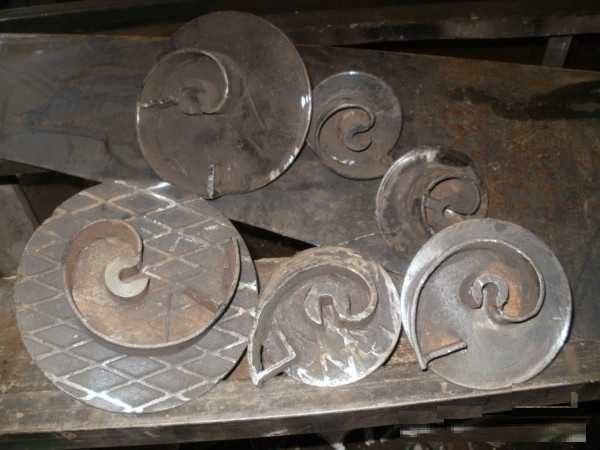
Often mandrels are milled from a metal circle of a suitable diameter with the help of a Bulgarian, but there are variants made of metal with steel plates welded on it, bent appropriately.
How to make such a machine for cold forging – in the following video. There is also a good description of the method of bringing the ends of the workpiece to a decent state – the usual untreated edges look very rough. For their processing there is special equipment, but, as it turned out, you can cope without it.
Torsion machine
As already said, these machines for cold forging allow you to make longitudinal bends on the bar. This is a relatively uncomplicated design. The main task is to fix one end of the bar stationary, to the second attach a lever, with the help of which you can twist the workpiece.
As a basis, a cut of profiled pipe with a thick wall (at least 3 mm) is suitable. The clamp can be welded from the same bars, leaving a square gap of the required diameter. A rope clamp of suitable size (available at a rigging store) can be used. Any of these stops are welded to the base.
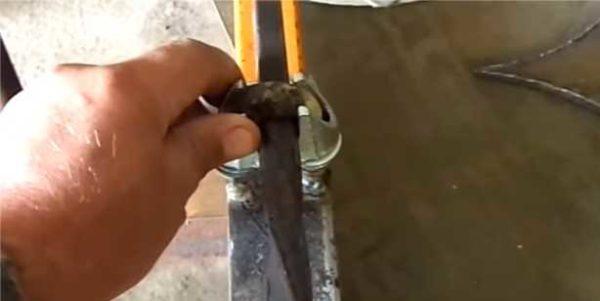
Next, it is necessary to somehow ensure that the second part of the workpiece is gripped and twisted. This can be done with the help of two bearing units. A pipe of suitable diameter is inserted inside, a handle is welded to it on one side – the design resembles the letter “T”. On the other side in the tube make a fixator: drill four holes, in them weld nuts for 12 or 14 bolts. The result is a good fixer – the bolts are screwed in after the bar has been inserted.
- Bearing assembly
- Workpiece clamp
- This is how the construction looks as a whole
Further – it is a matter of technique – with a lever we wind the required number of turns. We can not say that this work is for wimps, but with a large lever everything is not so difficult.
Even more simple machine for making torsions by cold forging in the following video.

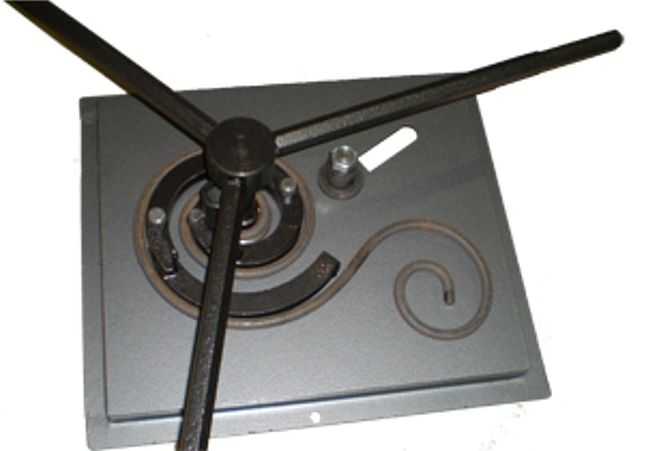
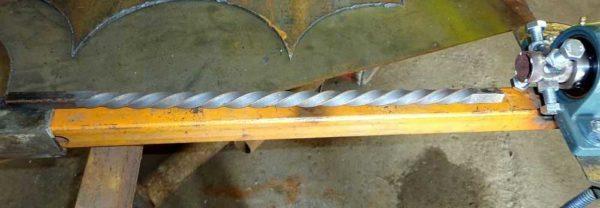
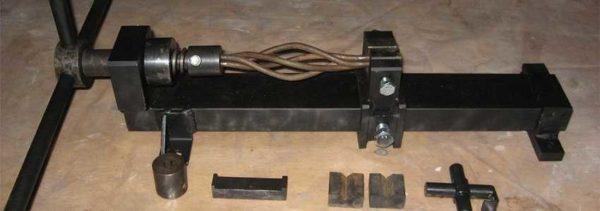
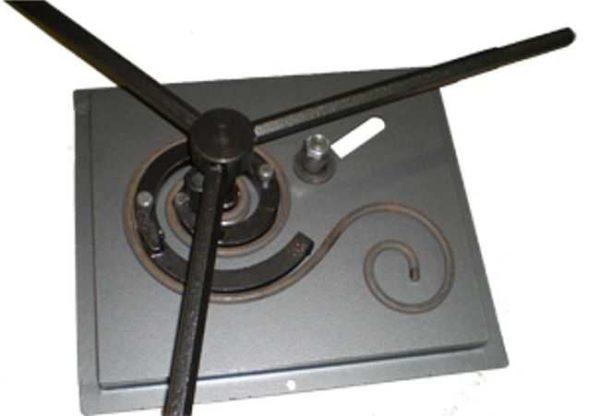
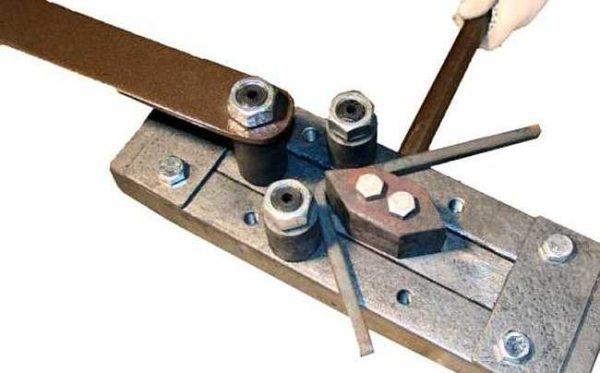
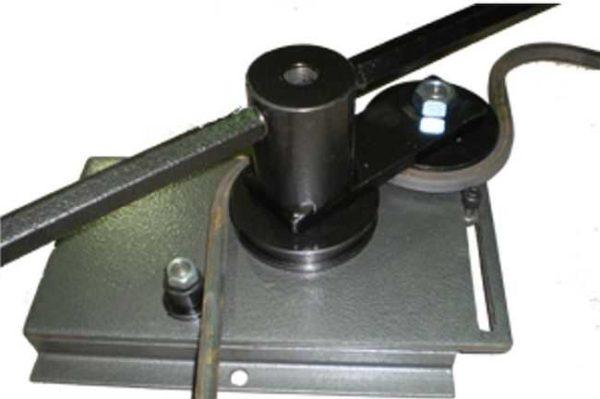
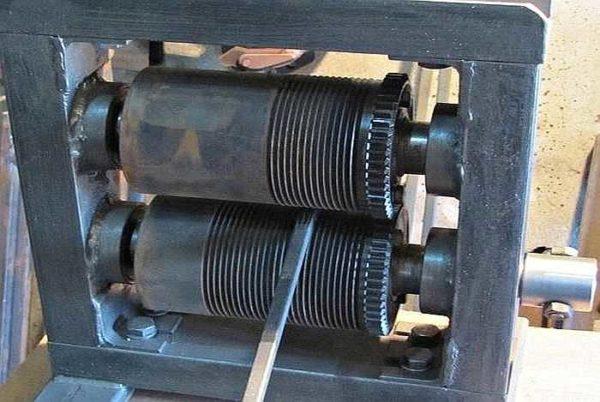
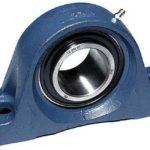
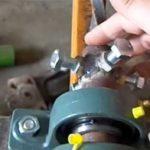
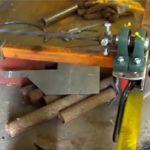
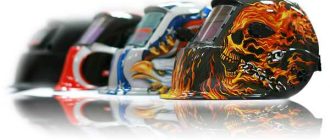
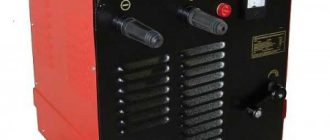
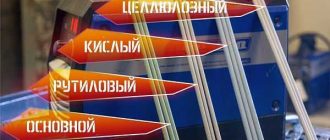
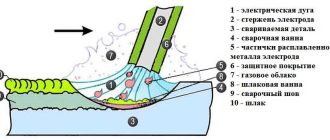
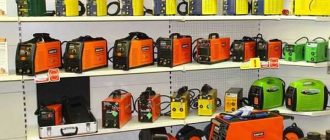

I recently tried making my own cold forging tools and it was a game changer. Using stuff laying around, I built a basic jig and it worked surprisingly well! It’s amazing what you can whip up at home when you get a little creative with materials. Definitely worth a go!